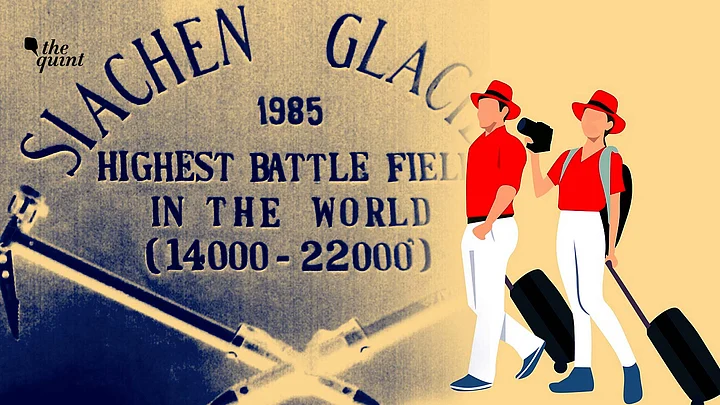(This opinion piece has been written by a serving officer of Indian Armed Forces who wishes to remain anonymous. The ‘Catch-22’ inspired byline indicates that.)
Quartered in Snow, Silent to Remain, When the Bugle Calls, We shall Rise and March Again
So says the epitaph at the War Memorial at Siachen Base Camp. The place where the saga of a Siachen Warrior begins. The Siachen Glacier is a 76-km-long ‘River of Ice’ on the East of the Saltoro Ridge. Indian troops are deployed on top of this ridge-line. In no place do Pakistani soldiers even see the main glacier leave alone occupy or dominate it.
It’s Not Easy Being a Soldier in Siachen
A soldier on reporting to the Base Camp individually, or along with his unit, does three weeks of training at the Siachen Battle School. During the course of this training he is put through a regime which enhances his fitness levels, so as to be able to withstand the rigours of life on the ‘Highest Battlefield in the World’. He learns not only to survive, assist his comrades in arms, and also combat the enemy under adverse circumstances.
The training is done keeping in mind the exacting physical standards, survival training and construction of defences, bridges and ladders. Obviously, preparation for offensive operations in the region forms the backdrop of this training.
Can Tourists Handle this Pressure?
The decision to open this hallowed battlefield to civilians as a trekking area is not new. For over 10 years now, the Army has been conducting the Siachen trek, for approximately 15 people, every year in the month of September. It has been cancelled a few times due to inclement weather.
However, to make it a regular tourist destination, is a decision that may have varied opinions. As suggested above, a trained soldier is given advanced training of three weeks before being inducted into the Glacier. While civilians going there may not require the entire gamut, they would definitely require a high degree of physical fitness as well as some specialized training, to include mountaineering and survival skills.
Special Mountaineering Skills for Siachen
These would, firstly, include climbing up a steep incline if ice using crampons—which are strapped into the boots and have spikes on the base and jutting at the toes and ice axes. Using only the spikes on the toes to climb, is called two-point-method and is used to negotiate gradual slopes. Using both crampons and one ice-axe is called three-point-method, used for steep climbs. Using two ice axes is four-point-method which is used for vertical climbs. These also require tremendous strength and stamina.
Another crucial piece of equipment which comes into use is the climbing rope. Tying various kinds of knots and hitches and holding together different items of varying shapes is a necessity in the Glacier. The rope and a correct knot is the difference between saving a life including your own and losing it.
Ropes need to be fixed using different types of pitons. These ropes are fixed by the first climbers and used to assist balance members of the team. The next part is the use of protective equipment to survive through an avalanche or a crevasse. While the basic cramp ons, ice axe and rope are essential, use of Avalanche Victim Detectors (AVD), hacksaw and even your own equipment to protect you from an avalanche is an essential drill.
It would be difficult to decide which is worse, getting caught in an avalanche or falling into a crevasse. Other special equipment includes Jummars, Carabiners and various types of pulleys. Each person needs to be adept at using these in various situations.
Will Military Be Required to Play the Role of Support Service to Tourism?
While training people is still possible and viable, there is also an issue of using the scarce resources deployed on the Glacier for the troops. Would separate camps be set up to accommodate the tourists or would they use the already stretched infrastructure of the Army? Casualty evacuation would require helicopters of the Army or Air Force which have limited flying hours and capacity. The flying hours are also restricted by bad weather days. How would rations and food supplies for these people be catered for?
Last, but not the least, would be the impact on the environment. As such, the Army has begun a clean Glacier campaign, but the additional waste material would only add to the overall challenge to keep the Glacier clean. While it is an extremely noble gesture and the common man wants to be a part of these hazardous challenges and share them with the soldiers, certain operational and administrative constraints need to be factored in, and only then can the final call be taken.
(This is an opinion piece and the views expressed above are the author’s own. The Quint neither endorses nor is responsible for the same.)
(At The Quint, we question everything. Play an active role in shaping our journalism by becoming a member today.)
